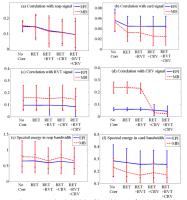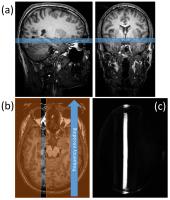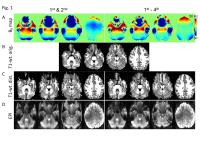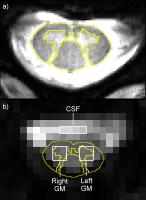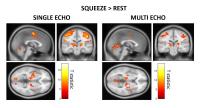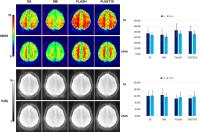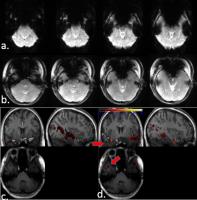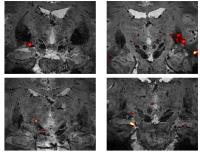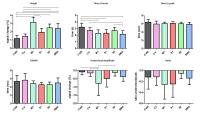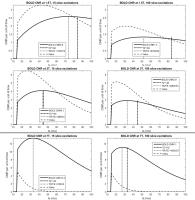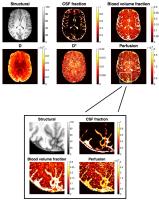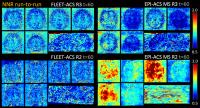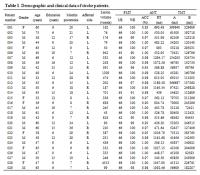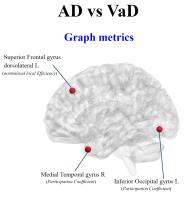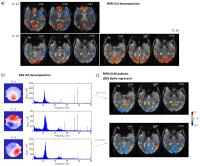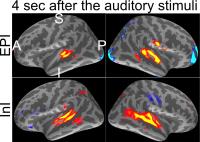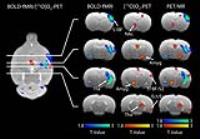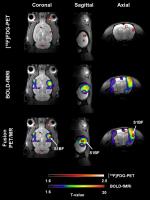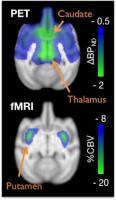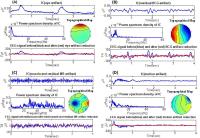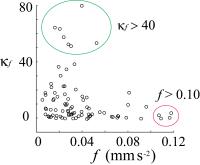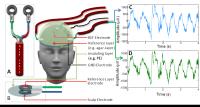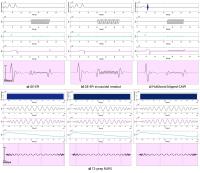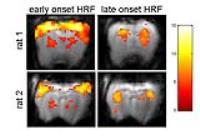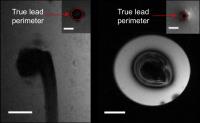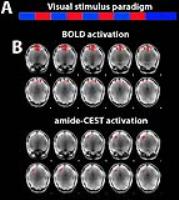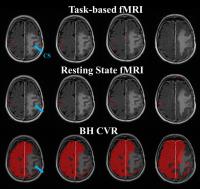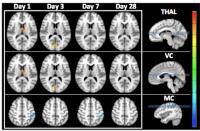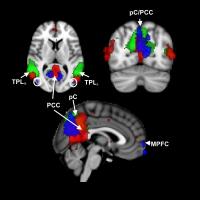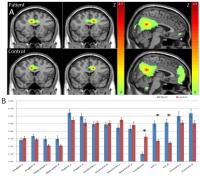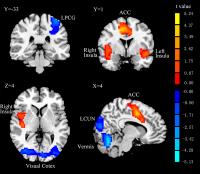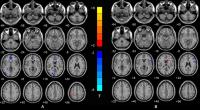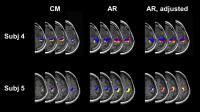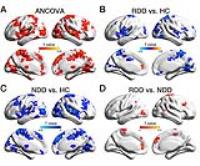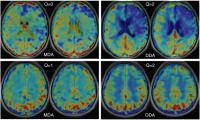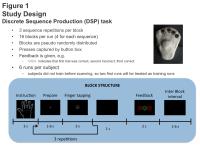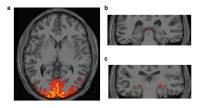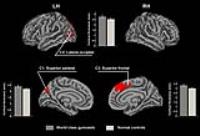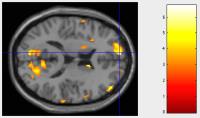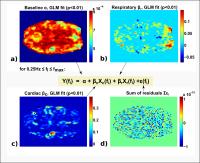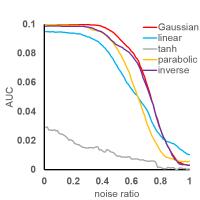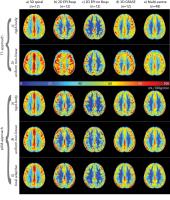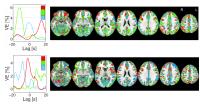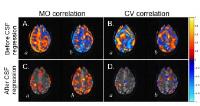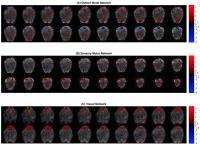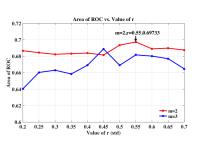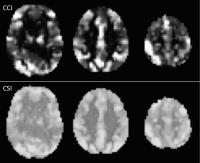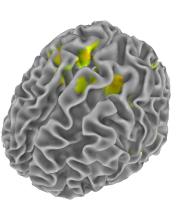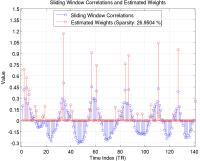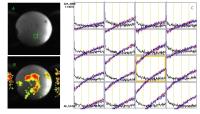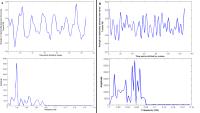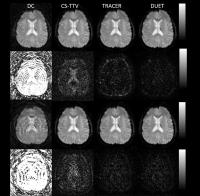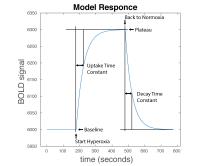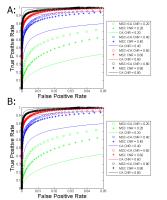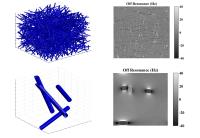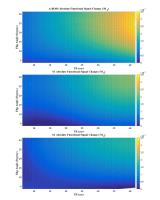|
Exhibition Hall 10:00 - 11:00 |
|
|
|
Computer # |
 |
3740.
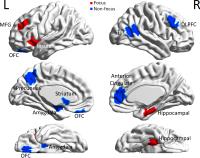 |
73 |
Identifying Foci of Brain Disorders from Effective Connectivity
Networks 
D Rangaprakash1, Gopikrishna Deshpande1,2,3,
Archana Venkataraman4, Jeffrey S Katz1,2,3,
Thomas S Denney1,2,3, and Michael N Dretsch5,6
1AU MRI Research Center, Department of Electrical
and Computer Engineering, Auburn University, Auburn, AL,
United States, 2Department
of Psychology, Auburn University, Auburn, AL, United States,3Alabama
Advanced Imaging Consortium, Auburn University and
University of Alabama Birmingham, Birmingham, AL, United
States, 4Department
of Diagnostic Radiology, Yale University, New Haven, CT,
United States, 5U.S.
Army Aeromedical Research Laboratory, Fort Rucker, AL,
United States, 6Human
Dimension Division, HQ TRADOC, Fort Eustis, VA, United
States
Brain connectivity studies report statistical differences in
pairwise connection strengths. While informative, such
results are difficult to interpret, since our understanding
of the brain relies on region information, rather than
connections. Given that large effects in natural systems are
likely caused by few pivotal sources, we employed a novel
framework to identify sources of disruption from directional
connectivity. Using resting-state fMRI, we employed static
and time-varying effective connectivities in a probabilistic
framework to identify affected foci and associated affected
connections. We illustrate its utility in identifying
disrupted foci in Soldiers with post-traumatic stress
disorder and mild traumatic brain injury.
|
|
3741.
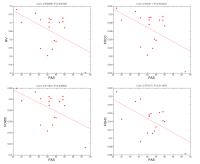 |
74 |
Brain Connectivity Network Dynamics Are Correlated with
Cognitive Performance in Multiple Sclerosis 
Sue-Jin Lin1,2, Aiping Liu3, Alex
MacKay4,5, Brenda Kosaka6, Samantha
Beveridge7, Irene Vavasour5, Anthony
Traboulsee8, and Martin J McKeown1,2,8
1Graduate Program in Neuroscience, University of
British Columbia, Vancouver, BC, Canada, 2Pacific
Parkinson’s Research Centre, University of British Columbia
Hospital, Vancouver, BC, Canada,3Department of
Electrical and Computer Engineering Program, University of
British Columbia, Vancouver, BC, Canada, 4Department
of Physics and Astronomy, University of British Columbia,
Vancouver, BC, Canada, 5Department
of Radiology, University of British Columbia Hospital,
Vancouver, BC, Canada, 6Department
of Psychiatry, University of British Columbia Hospital,
Vancouver, BC, Canada,7Graduate Program in
Counselling Psychology, University of British Columbia,
Vancouver, BC, Canada, 8Neurology,
Faculty of Medicine, University of British Columbia,
Vancouver, BC, Canada
Brain connectivity networks are usually estimated with the
assumption that neural networks do not change over time.
However, functional connectivity is inherently
non-stationary, changing across time from seconds to
minutes. In healthy subjects, dynamic reconfiguration of
functional connectivity assessed by fMRI has been estimated
and has been linked to cognitive tests, indicating that
flexibility of connectivity normally contributes to
cognitive performance. In this study, we applied a novel
time-varying analysis to study network dynamics in healthy
controls and subjects with Multiple Sclerosis (MS).
|
|
3742.
 |
75 |
Parcellation-based connectome assessment by using structural and
functional connectivity 
Ying-Chia Lin1, Tommaso Gili2,3,
Sotirios A. Tsaftaris 1,4,
Andrea Gabrielli5, Mariangela Iorio3,
Gianfranco Spalletta3, and Guido Caldarelli1
1IMT Institute for Advanced Studies Lucca, Lucca,
Italy, 2Enrico
Fermi Centre, Rome, Italy, 3IRCCS
Fondazione Santa Lucia, Rome, Italy, 4Institute
of Digital Communications, School of Engineering, The
University of Edinburgh, Edinburgh, United Kingdom, 5ISC-CNR,
UOS Sapienza, Dipartimento di Fisica, Universita Sapienza,
Rome, Italy
Connectome analysis of the human brain structural and
functional architecture provides a unique opportunity to
understand the organization of brain networks. In this work,
we investigate a novel large scale parcellation-based
connectome, merging together information coming from resting
state fMRI (rs-fMRI) data and diffusion tensor imaging (DTI)
measurements.
|
|
3743.
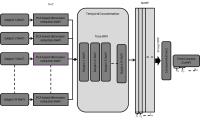 |
76 |
Group NMF Analysis for Resting State fMRI 
Bhushan Patil1, Mahesh Panicker1,
Radhika Madhavan1, and Suresh Joel1
1Global Research, General Electric Global
Research, Bangalore, India
Clustering of resting state fMRI signals for extraction of
functional brain networks has been showed to provide value
in recent times. Independent component analysis (ICA) is the
most commonly used technique to extract functional brain
networks. More recently non-negative matrix factorization
(NMF) has been successfully utilized for identification of
brain functional networks in single-subject resting state
fMRI data. NMF may provide complementary information for
analyzing resting state fMRI data. However, the technique
has not been extended to provide group inferences. This is
non-trivial, since the components obtained from
single subject NMF is not ordered. Using temporal
concatenation, similar to group ICA, we introduce a new
framework for back reconstruction of individual subject from
group analysis using NMF. This framework will make
comparisons between groups possible for NMF.
|
|
3744.
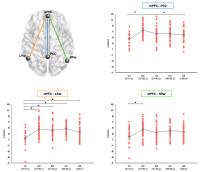 |
77 |
Mixed ICA and Clustering Method Introduced to Study the Life
Span Changes in the Within-Network Functional Connectivity of
the Default Mode Network 
Isa Costantini1, Ottavia Dipasquale1,2,
Laura Pelizzari1,2, Maria Marcella Laganà2,
Francesca Baglio2, and Giuseppe Baselli1
1Department of Electronics, Information and
Bioengineering, Politecnico di Milano, Milan, Italy, 2IRCCS,
Don Gnocchi Foundation, Milan, Italy
This study combines the independent component analysis and a
local clustering method in order to study the within-network
functional connectivity of the default mode network (DMN).
Our results strongly support the hypothesis that the
long-range FC between anterior and posterior DMN increases
from the childhood to the young adulthood and slowly
decreases with aging. This joint approach allowed us to
obtain more detailed information about within-network FC
changes among the DMN sub-regions.
|
|
3745.
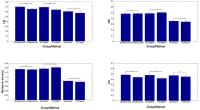 |
78 |
A novel sparse partial correlation method for simultaneous
estimation of functional networks in group comparisons 
Xiaoyun Liang1, David Vaughan2,3, Alan
Connelly1,4, and Fernando Calamante1,4
1Imaging Division, Florey Institute of
Neuroscience and Mental Health, Melbourne, Australia, 2Epilepsy
Division, Florey Institute of Neuroscience and Mental
Health, Melbourne, Australia, 3Department
of Neurology, Austin Health, Melbourne, Australia, 4Department
of Medicine, University of Melbourne, Melbourne, Australia
We propose a novel approach, Graphical-LAsso with
Stability-Selection (GM-GLASS), by employing sparse group
penalties for simultaneously estimating networks from
healthy control and patient groups. Simulations demonstrate
that both GM-GLASS and JGMSS outperform Fisher Z-transform.
Our in vivo results further show that GM-GLASS yields
highest contrast of network metrics between groups,
demonstrating the superiority of GM-GLASS in detecting
significance group differences over JGMSS and Fisher
Z-transform. Overall, by controlling confounding variations
between subjects, and therefore enhancing the statistical
power, our simulated and in vivo results demonstrate that
GM-GLASS provides a robust approach for conducting group
comparison studies.
|
|
3746.
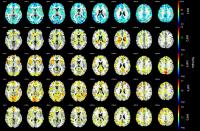 |
79 |
Characterizing cross session coherence in the resting-state
human brain 
Shuqin Zhou1, Xiaopeng Song1, Yue Cai1,
Xuemei Fu1, and Jiahong Gao2
1Department of Biomedical Engineering, Peking
University, Beijing, China, People's Republic of, 2Center
for MRI Research and Beijing City Key Lab for Medical
Physics and Engineering, Peking University, Beijing, China,
People's Republic of
Previous studies suggested that the BOLD signal might be a
mixture of different frequency components, but the
neurophysiological basis of these components is still
unclear. In this study, we attempted to quantify the
similarity of the frequency profiles of the resting-state
BOLD signals in different sessions by computing the cross
session coherence (CSC) of these components. Our results
suggested that different frequency components of BOLD signal
in the brain might be associated with distinct intrinsic
neuronal oscillations rather than random noise.
|
|
3747.
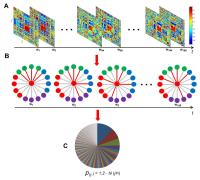 |
80 |
Dynamic Reconfiguration of Intrinsic Functional Connectivity: A
Probabilistic Framework -
Permission Withheld
Dazhi Yin1, Kristina Zeljic1, Zhiwei
Wang1, Qian Lv1, and Zheng Wang1
1Institute of Neuroscience, Chinese Academy of
Sciences, Shanghai, China, People's Republic of
Neural basis enabling flexible behavior remains largely
unknown. Based on the spatiotemporal dynamics of intrinsic
functional connectivity, we proposed a probabilistic
modeling framework to quantify the functional flexibility
and integration of different brain regions. We then applied
this framework to investigate the functional representation
of hand preference. Our findings revealed higher functional
flexibility and integration for the preferred hand that
controls cognitive-motor requirements for skilled movements.
|
|
3748.
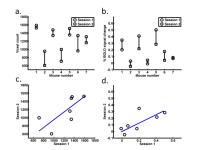 |
81 |
The long-term reproducibility of stimulation and resting state
fMRI in the mouse 
Yi-Ching Lynn Ho1,2, Fiftarina Puspitasari1,
and Kai-Hsiang Chuang1
1Singapore Bioimaging Consortium, Agency for
Science, Technology & Research (A*STAR), Singapore,
Singapore, 2Interdisciplinary
Institute of Neuroscience & Technology (ZIINT), Zhejiang
University, Hangzhou, China, People's Republic of
There is a need to evaluate the long-term reproducibility of
stimulation and resting state fMRI in the mouse, given the
technical challenges of mouse fMRI. We compared 2 sessions
of scans done between 3-9 weeks apart on 7 C57BL/6 mice. The
intraclass correlation (ICC) indicated significant absolute
agreement for forepaw stimulation fMRI results.
Interhemispheric functional connectivity scores for a large
subcortical area like the CPu were also found to be
reproducible, but in a small cortical area like the S1FL,
reproducibility did not reach significance. Possible reasons
include data coregistration mismatches due to distortion and
susceptibility artifacts.
|
|
3749.
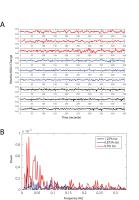 |
82 |
Effects of Anesthesia on Functional Connectivity in Primary
Somatosensory Cortex in Monkeys 
Tung-Lin Wu1,2, Arabinda Mishra1, Feng
Wang1,3, Li Min Chen1,3, and John C.
Gore1,2,3
1Vanderbilt University Institute of Imaging
Science, Nashville, TN, United States, 2Biomedical
Engineering, Vanderbilt University, Nashville, TN, United
States, 3Radiology
and Radiological Sciences, Vanderbilt University, Nashville,
TN, United States
Low-frequency fluctuation of resting state functional MRI
(rsfMRI) signals have been linked to changes in the
spontaneous neuronal activity, but their relationships have
not been established. Anesthesia is known to suppress
neuronal activity. Thus, by examining the effects of
different levels of anesthesia on changes in inter-regional
functional connectivity and the power spectra, we will be
able to assess the neuronal origins of the rsfMRI signals.
We carried out live anesthetized squirrel monkey experiments
that measure how low frequency fluctuations and
inter-regional functional connectivity within a small local
network (primary somatosensory cortex) vary as isoflurane
levels are altered in a small range.
|
|
3750.
 |
83 |
Chronic RF-coil and electrode implantation approach for
long-term EEG-fMRI studies in rodents 
Tiina Pirttimäki1, Artem Shatillo1,
Mikko Kettunen1, Jaakko Paasonen1,
Raimo Salo1, Alejandra Sierra Lopez 1,
Kimmo Jokivarsi1, Ville Leinonen2,
Simon Quittek3, Asla Pitkänen1, and
Olli Gröhn1
1Neurobiology, A.I.Virtanen Institute for
Molecular Medicine, University of Eastern Finland, Kuopio,
Finland, 2Institute
of Clinical Medicine - Neurosurgery, University of Eastern
Finland and Neurosurgery of NeuroCenter, Kuopio University
Hospital, Kuopio, Finland, 3RAPID
Biomedical GmbH Technologiepark Wuerzburg-Rimpar, Rimpar,
Germany
Simultaneous EEG-fMRI is routinely used in clinical settings
as it provides better temporal and spatial information for
example when locating seizure onset zones. In pre-clinical
research with small rodents, obtaining simultaneous EEG-fMRI
in longitudinal studies has been challenged by a number
problems including issues related to magnetic susceptibility
artifacts. Here, we demonstrate a modified method for
permanent MRI coil and EEG electrode implantation that is
suitable for long-term chronic follow-up studies on
epileptogenesis with improved data consistency across
imaging and video-EEG monitoring sessions.
|
|
3751.
 |
84 |
Longitudinal resting-state fMRI and 1H-MRS characterization in
the mouse brain during development of a chronic pain state 
David Bühlmann1,2, Joanes Grandjean1,
Giovanna Diletta Ielacqua1, Jael Xandry3,
and Markus Rudin1,3
1Institute for Biomedical Engineering, ETH and
University of Zurich, Zurich, Switzerland, 2Neuroscience
Center Zurich, Zurich, Switzerland, 3Institute
of Pharmacology & Toxicology, University of Zurich, Zurich,
Switzerland
We performed longitudinal resting-state fMRI and single
voxel 1H-MRS
in a mouse model of chronic pain derived from bone cancer.
Linear mixed model analysis of independent components
revealed significant functional changes mostly in limbic but
also cortical networks. These findings were reproducible
across strains and mirror findings from clinical studies on
chronic back pain patients. 1H-MRS
in the affected ventral hippocampus yielded significant
decreases in glutamate, myo-inositol and
glycerylophosphorylcholine concentrations in tumor-animals
as well as increased glutamine levels. Given the
translatability, these readouts could potentially be used to
evaluate novel treatments specifically for chronic pain.
|
|
3752.
 |
85 |
Monitoring longitudinal functional reorganization of a capsular
infarct rat model using resting-state fMRI -
Video Not Available
Chun-Qiang Lu1 and
Shenghong Ju1,2
1Southeast University, Nanjing, China, People's
Republic of, 2ZhongDa
Hospital, Nanjing, China, People's Republic of
Many resting-state fMRI studies in stroke patients claim
that rs-fMRI measurements is behaviorally relevant. However,
most of these studies enroll stoke patients with high
heterogeneity. In this study, twenty-three rats underwent
photothrombotic stroke lesioning in the PLIC with minimal
affect to the nearby area. We monitor longitudinal
resting-state brain activity and behavior change in this
highly homogeneous white matter infarct rat model by using
fcMRI and rat behavior test and try to find out the
most behaviorally relevant fcMRI measurements. This project
is still going on.
|
|
3753.
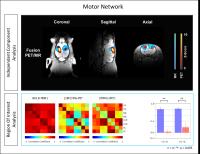 |
86 |
Metabolic and functional connectivity of the rat brain during
resting state assessed by simultaneous [18F]FDG-PET/MR 
Andre Thielcke1, Mario Amend1, Suril
Gohel2, Bharat Biswal2, Bernd J.
Pichler1, and Hans F. Wehrl1
1Department of Preclinical Imaging and
Radiopharmacy, Werner Siemens Imaging Center, Eberhard Karls
University of Tuebingen, Tuebingen, Germany, 2Department
of Biomedical Engineering, New Jersey Institute of
Technology, Newark, NJ, United States
Recent advancement in hardware and software has enabled
researchers to study systems level neuroscience using
simultaneous PET/MRI. In this study, simultaneous PET/MR was
used to investigate resting state networks (RSN) in rats,
comparing [18F]FDG PET vs. BOLD-fMRI. RSNs such as default
mode network (DMN) have been shown to be disrupted in
clinical populations. ICA and ROI-analysis was used to
elucidate the complementary nature between PET/MR and
visualize brain connectivity. ICA PET and MR data showed
prominent RSNs. However, ROI-analysis illustrated different
connectivity between network-involved areas. This work
suggests the complimentary nature of metabolic connectivity
mapping (Cometomics).
|
|
3754.
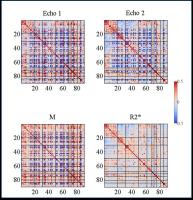 |
87 |
Decoupling flow effects on functional connectivity using R2*
resting-sate fMRI - Permission
Withheld
Venkata Veerendranadh Chebrolu1, Brice Fernandez2,
Suresh E Joel1, Bharath Sundar1, Luca
Marinelli3, Rakesh Mullick1, Victor I
Spoormaker4, Michael Czisch4, and
Thomas K Foo3
1GE Global Research, Bangalore, India, 2GE
Healthcare, Munich, Germany, 3GE
Global Research, Niskayuna, NY, United States, 4Max
Planck Institute of Psychiatry, Munich, Germany
In this work we compare whole brain functional connectivity
(FC) estimates from R2* resting-sate fMRI (rs-fMRI) with
BOLD rs-fMRI. Thirty-two healthy subjects were imaged using
three-echo multi-echo echo-planar-imaging (MEPI) under
institutional guidelines. FC matrices based on structural
and functional brain parcellation schemes were computed for
individual BOLD echoes, R2* and M (initial magnetization
approximated by BOLD signal at TE=0). Results tend to show
that M might be helpful to decouple flow effects. Positive
between network connectivity was observed in BOLD, M and R2*
derived matrices. Anti-correlations observed between
networks in BOLD and M were significantly lesser in R2*
derived matrices.
|
|
3755.
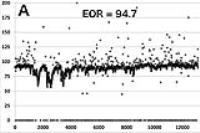 |
88 |
Evaluation of Resting State Network by Pupil Diameter Monitoring
during fMRI Measurements – The Relationship between the
Stability of the Pupil Diameter and the Activation in the
Posterior Cingulate 
Toshiharu Nakai1, Keiji Matsuda2,
Sachiko Kiyama1, and Ichiro Takashima2
1NeuroImaging & Informatics, NCGG, Ohbu, Japan, 2Human
Informatics Research Institute, AIST, Tsukuba, Japan
The status of the resting state performance was evaluated by
using pupil diameter monitoring during fMRI sessions. The
activation in the posterior cingulate was higher in the
subjects who kept constant pupil diameters than those with
time decay, suggesting that attempts to keep eyes open and
fix them to the cross mark target may demand higher
consciousness level. In other resting state networks (RSNs),
no significant effect was confirmed suggesting that the RSNs
are robust and not strongly affected by the tension or eye
closing for a short time.
|
|
3756.
|
89 |
Resting-state fMRI fails to detect disease progression in a
multicenter randomized clinical trial of Alzheimer's disease 
Coimbra Alexandre1, Farshid Faraji1,
Alexander de Crespigny1, Lee Honigberg1,
Robert Paul1, and David Clayton1
1Research and Early Development, Genentech, South
San Francisco, CA, United States
RS-fMRI was implemented in two multicenter clinical trials
of a novel therapeutic for AD. Although data of good
quality were acquired, none of three functional connectivity
metrics (FCMs) showed significant progression associated
with disease in placebo-treated patients: changes in
connectivity in this mild-to-moderate AD population were
less than the measurement precision. Significant cognitive
decline and brain atrophy were observed. Test-retest
precision was similar to other single-center studies.
Operational and acquisition improvements could increase data
quality (though difficult in multicenter trials), but more
sensitive analysis will be needed for RS-fMRI to be a useful
tool for the development of AD therapeutics.
|
|
3757.
 |
90 |
Increased functional connectivity associates with the improved
emotion regulation after 8-week mindfulness-based stress
reduction (MBSR) training using resting-state fMRI analysis 
Yao-Chia Shih1,2, Chang-Le Chen2,3,
Shih-Chin Fang4, Tzung-Kuen Wen5,
Da-Lun Tang6, Si-Chen Lee7, and
Wen-Yih Issac Tseng2,3,8
1Institute of Biomedical Engineering, National
Taiwan University, Taipei, Taiwan, 2Institute
of Medical Device and Imaging, National Taiwan University
College of Medicine, Taipei, Taiwan, 3Graduate
Institute of Brain and Mind Sciences, College of Medicine,
National Taiwan University, Taipei, Taiwan, 4Department
of Neurology, Cardinal Tien Hospital Yonghe Branch, New
Taipei City, Taiwan,5Department of Buddhist
Studies, Dharma Drum Institute of Liberal Arts, New Taipei
City, Taiwan, 6Department
of Mass Communication, Tamkang University, Taipei, Taiwan, 7Department
of Electrical Engineering, National Taiwan University,
Taipei, Taiwan, 8Molecular
Imaging Center, National Taiwan University, Taipei, Taiwan
Mindfulness-based stress reduction (MBSR) is modified from
Buddhist traditions and aims to improve self-regulation. In
this study, we employed the resting-state functional MRI to
investigate changes of functional connectivity (FC) before
and after MBSR practice, and before and after 8-week MBSR
training. We hypothesized that changes in FC may reflect
improvements of self-regulation after MBSR training. We
found MBSR strengthened FC couplings of right subgenual
anterior cingulate cortex and lateral middle orbitofrontal
cortex with posterior cingulate cortex in the beginners
after 8-week MBSR training. Our findings reveal an
underlying neural mechanism of positive effects of MBSR
practice on emotional regulation.
|
|
3758.
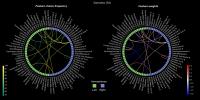 |
91 |
Pattern classification reveals functional connectivity
differences in expert and novice meditators 
Roberto Guidotti1,2, Mauro Gianni Perrucci1,2,
Cosimo Del Gratta1,2, Antonino Raffone3,
and Gian Luca Romani1,2
1Neuroscience, Imaging, and Clinical Sciences,
Gabriele D'annunzio University Chieti-Pescara, Chieti,
Italy, 2Institute
for Advanced Biomedical Technologies, Gabriele D'Annunzio
University Chieti-Pescara, Chieti, Italy, 3Psychology,
La Sapienza University Rome, Rome, Italy
In this work we explored how experience modulates ROI-based
fMRI functional connectivity patterns in two different
meditators groups: experts and novices. We recorded fMRI
data during two styles of meditation (focused attention
(Samatha), and open monitoring (Vipassana)), in two groups
of subjects (Buddist Theravada Monks, and novices), and we
calculated the connectivity pattern between ROIs from the
AAL90 atlas. We then used a pattern classification approach
to discriminate these groups and find which connections and
nodes are important to classify subject experience. Regions
having a role in decoding were those implicated in
self-awareness and attention control.
|
|
3759.
|
92 |
Long-term and acute cannabis effects on brain networks -
Permission Withheld
Isabelle Berger1,2,3, Philippe Maeder1,
Jean-Marie Annoni4, Haithem Chtioui5,
Christian Giroud6, Bernard Favrat7,
Kim Dao5, Marie Fabritius6,
Jean-Frédéric Mall8, Giovanni Battistella1,9,
Reto Meuli1, and Eleonora Fornari1,2
1Department of Radiology, Centre Hospitalier
Universitaire Vaudois (CHUV), and University of Lausanne,
Lausanne, Switzerland, 2CIBM
(Centre d'Imagerie Biomédicale), Centre Hospitalier
Universitaire Vaudois (CHUV) unit, Lausanne, Switzerland, 3Department
of Neurology, Besancon University Hospital, Besançon,
France, 4Neurology
Units, Department of Medicine, University of Fribourg,
Fribourg, Switzerland, 5Department
of Clinical Pharmacology and Toxicology, Centre Hospitalier
Universitaire Vaudois CHUV, Lausanne, Switzerland, 6CURML
(University Center of Legal Medicine), UTCF (Forensic
Toxicology and Chemistry Unit), Lausanne, Switzerland, 7CURML
(University Center of Legal Medicine), UMPT (Unit of
Psychology and Traffic Medicine), Lausanne, Switzerland, 8Department
of Psychiatry, SUPAA (Service Universitaire de Psychiatrie
de l'Age Avancé), CHUV, Lausanne, Switzerland, 9Department
of Neurology, Icahn School of Médicine at Mount Sinai, New
York, NY, United States
The purpose of our study was to reveal the changes in
functional networks due to chronic and acute cannabis use,
and to highlight the anterior insula specific involvement.
We explored changes in functional connectivity by means of
ICA and seed-based methods. Long-term cannabis use leads to
an attenuation of the engagement of the Salience Network
regions. The further decrease of activity after acute
consumption can reflect the decrease of subject awareness in
their performances, or a modulation of networks interplay.
Modifications revealed by seed-based connectivity analysis
support and clarify the insular role in cannabis addiction.
|
|
3760.
 |
93 |
Wavelet variance analysis of brain resting state temporal
dynamics reveals role of precuneus to reach and sustain abnormal
default-mode network activity in major depressive disorder 
Masaya Misaki1, Hideo Suzuki1,
Jonathan Savitz1,2, Brett McKinney3,
and Jerzy Bodurka1,4
1Laureate Institute for Brain Research, Tulsa,
OK, United States, 2Dept.
of Medicine, Tulsa School of Community Medicine, University
of Tulsa, Tulsa, OK, United States, 3Tandy
School of Computer Science, Dept. of Mathematics, University
of Tulsa, Tulsa, OK, United States, 4College
of Engineering, University of Oklahoma, Tulsa, OK, United
States
We investigated temporal dynamics of resting-state brain
activation in BOLD resting-state networks (RSNs) in patients
with major depressive disorder (MDD) and healthy controls
(HC). The wavelet variance analysis was applied to the RSNs
time courses to assess frequency specific temporal
fluctuations. Comparing to HC, MDD subjects had
significantly lower fluctuation in the default-mode network
(DMN) and the high-visual network in 0.031-0.125Hz and
higher fluctuation in the language/auditory and the
cerebellum networks in 0.125-0.25Hz and 0.0156-0.031Hz. The
low DMN fluctuation in MDD was associated with high
precuneus activity that triggered increase of DMN activity.
|
|
3761.
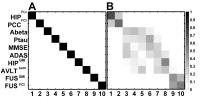 |
94 |
Staging Alzheimer’s Disease Risk by Sequencing Brain Function
and Structure, Cerebrospinal Fluid, and Cognition Biomarkers 
Guangyu Chen1, Hao Shu1, Gang Chen1,
Barney Douglas Ward1, Piero G Antuono2,
and Shi-Jiang Li1
1biophysics, medical college of wisconsin,
milwaukee, WI, United States, 2Neurology,
medical college of wisconsin, milwaukee, WI, United States
A robust temporal ordering sequence of biomarkers for
staging the Alzheimer’s disease (AD) progression risk is
revealed by integrating brain function and structure,
cerebrospinal fluid (CSF), and cognition biomarkers into an
event-based model. In this study, we found that functional
abnormality in the hippocampus and posterior cingulate
cortex networks is the earliest event in the preclinical
phase of AD, even antedating the detectable CSF Aβ and p-tau
abnormalities; this sheds light on the link between
preclinical AD status and its symptomatic onset for
accurately identifying progressive AD trajectories along the
disease course, given the condition that disease onset is
insidious.
|
|
3762.
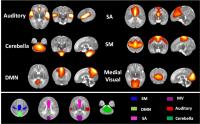 |
95 |
The effect of preterm birth on the thalamocortical development
during the neonatal stage: A resting-state fMRI study -
Video Not Available
Yue Cai1, Xiushuang Wu2, Yuan Shi3,
Lizhi Xie4, and Jiahong Gao5
1Biomedical Engineering, Peking University,
Beijing, China, People's Republic of, 2Department
of Pediatrics, Daping Hospital, Third Military Medical
University, Chong Qing, China, People's Republic of,3Department
of Pediatrics, Daping Hospital, Third Military Medical
University, Chongqing, China, Chong Qing, China, People's
Republic of, 4GE
Healthcare, MR Research China, Beijing, Beijing, China,
People's Republic of, 5Center
for MRI Research and Beijing City Key Lab for Medical
Physics and Engineering, Peking University, Beijing, China,
People's Republic of
Preterm birth is a leading cause of cognitive impairment in
childhood and is associated with cerebral gray and white
matter abnormalities. Using the resting-state fMRI imaging
analysis, we tested the hypothesis that preterm birth might
to some extent affect the thalamo-cortical connections
particularly in the thalamo-SM and thalamo-SA projections.
Reduced thalamo-SM and increased thalamo-SA connectivity
were found in the preterm newborns, and preterm with
punctate white matter lesions (PWMLs) exhibited a more sever
trend in the thalamo-SA projection.
|
|
3763.
 |
96 |
Aberrant functional connectivity of resting state networks in
subclinical hypothyroidism 
Mukesh Kumar1, Ritu Tyagi1, Prabhjot
Kaur1, Subash Khushu1, Maria M D'souza1,
Tarun Sekhri2, Ratnesh Kanwar2, and
Poonam Rana1
1NMR Research Center, Institute of Nuclear
Medicine and Allied Science, Delhi, India, 2Thyroid
research centre, Institute of Nuclear Medicine and Allied
Science, Delhi, India
Cognitive deficit in Subclinical hypothyroidism (SCH)
patient is still a topic to research work upon. The present
study was conducted to examine resting state networks (RSNs)
in SCH using rsfMRI. SCH patients showed significantly
decreased functional connectivity in right fronto-parietal
network and anterior default mode network (DMN) as compared
with control subjects. Our finding suggests cognitive
impairment in resting state networks related to attention
and emotional processing in SCH patients
|
|


